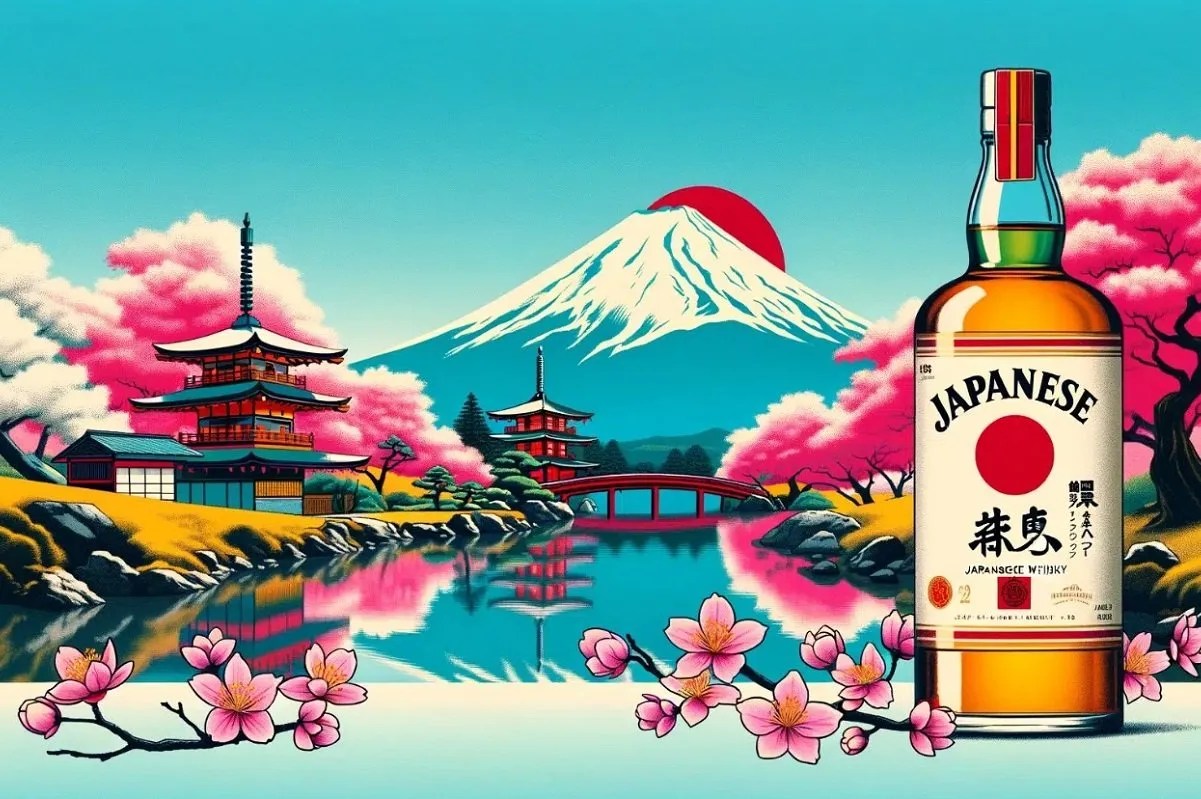
Japan is pretty new to the whisky game, but they’re turning heads fast by creating a quality whisky that reviles others that have been around for centuries. For many whisky fundies who prefer the traditional Scotch or Irish whisky, you might want to give Japanese whisky a try, it may surprise you. But, before you do, there are a few things you should know about Japanese whisky, starting with its history.
The History of Japanese Whisky
Shinjiro Torii, the pioneer of Whisky in Japan brought it over in 2924, desiring to give Japan a taste of the famous Scotch whisky. While in Scotland Torii took his time to learn how the Scots made their whisky. From there, he travelled back to Japan and and began making his own whisky using the Scottish methods.

Overtime, as whisky became more popular in Japan, distilleries started creating their own distilling methods. After the second world war, the Japanese economy sky-rocketed, with whisky being one of the products in demand. Because of this, many new distilleries where established, broadening Japans ability to craft a quality whisky.
Fast-forward 40 to 50 years to the 1980 and 90s and Japanese whisky came under fire with many distilleries being forced to closed because of a lack of customer support because of a competitor, shōchū. This 20 year gap saw a massive decline in the whisky industry in Japan, but, if we look at the last 20 years of the 21 century, Japanese whisky has come back with force.
Nowadays, Japanese whiskies are considered among the best in the world. They’re favoured for their flavour and origin. They come in a range of styles, including light, soft whiskies, to complex, rich-tasting whiskies that’ll warm you up in the coldest evenings.
The Japanese used Scottish distilling methods
As we said, when Torii studied how the Scottish produced their whisky, he brought those methods back to Japan and applied them to distilling his own whisky. Nowadays, their distilling methods have changed a bit, with more focus being placed on refining their process than offering consistency. That said, they still use a similar distilling method to the Scots. For instance, they’ll use a double distilling malted or peated barley and age their whisky in wooden barrels.
They make whisky with Scotch ingredients
Many distilleries in Japan order their supplies for their whisky from Scotland. Their malted and peated barley usually comes from the isles. However, what sets them apart is where they get their other ingredients.

For example, the Yamazaki Distillery sources its water from the mountains near Tokyo and the wood used for the ageing barrels, Mizunara (natural oak). The addition of these ingredients give the Japanese whisky a familiar but unique taste of it’s own.
They aim for refinement instead of consistency
Because Japanese distillers use similar ingredients to Scottish distillers, it’s easy to assume that they’ll taste very similar. In fact, if you place experts at a table with a blindfold and allow them to taste each whisky, many of them might find it difficult to them apart. However, there are some differences. Scottish whiskey is well known for its quality and consistency. Considering it’s been around for the last 500 years, it’s clear that they’ve been consistent.
On the other hand, Japan is more focused on refining their whisky. In an endeavour to improve, they’ll constantly tweak their recipes to provide it with more flavour or different notes. The show a lot of attention to detail, focusing on achieving the perfect whisky.
It’s growing in popularity
Over the last 20 years or so, Japanese whisky has risen to the top tier whiskies in the world, which is surprising since many of their distilleries went out of business between 1980 and 90. With every year, Japan is starting to challenge the wests dominance over the whisky industry. This isn’t necessarily in the number of sales, but more so in quality.
In 2012, Japanese distillery Yamazaki’s 25-year-old whisky won the competition for the world’s best single malt whisky at the World Whisky Awards. That wasn’t the only Japanese whisky to win though. The Taketsuru 17-year-old whisky also won the competition for the world’s best-blended malt whisky. These are only two examples that attest to the quality of whisky coming out of Japan.
Final Thoughts
For a whisky that’s only been in production for the last century or so, Japanese whisky is sure to give its competitors like Scotland and Ireland a run for their money. Do yourself a favour and check out the range of the best Japanese Whiskies on the market. You might just find your new favourite whiskey.

